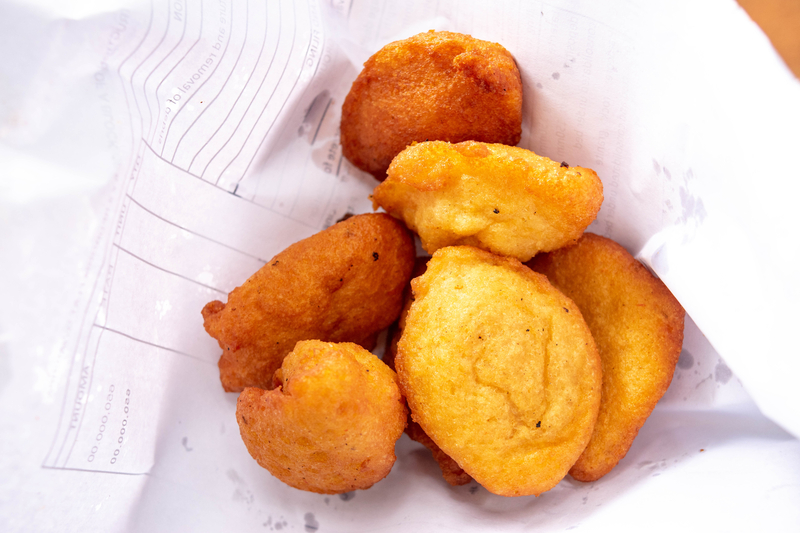How to Make Bean Cake (Akara) from Scratch: Step-by-Step Guide

In essence, Bean Cake (Akara) is a beloved West African fritter made from de-skinned black-eyed peas (or cowpeas), blended with onions, peppers, and spices, then deep-fried to golden perfection WikipediaWikipedia. This guide covers everything you need—from bean selection and peeling, through blending and aerating the batter, to frying techniques that yield fluffy interiors and crisp exteriors. You’ll also learn key tips for troubleshooting flat or oily akara, suitable serving ideas, and variations like Koose (Ghanaian style) and acarajé (Brazilian).
What Is Bean Cake (Akara)?
Akara—also called bean cake, koosay, koose, or acarajé—is a savory fritter originating with the Yoruba people in Nigeria and found across West Africa and the diaspora Wikipedia. It’s made by soaking and peeling beans, blending them with aromatic peppers and onions, then deep-frying spoonfuls of the paste until puffed and golden Nkechi Ajaeroh.
Essential Ingredients
- Black-Eyed Peas (Cowpeas): 2 cups, soaked 4–6 hours and skins removed K’s Cuisine
- Onion: ½ cup, chopped The Kitchn
- Scotch Bonnet or Habanero Pepper: 1–2, seeded for milder heat foodsturvs.ca
- Salt: 1 tsp, to taste Jodam House
- All-Purpose Flour or Cornstarch (Optional): 2–3 Tbsp for structure foodsturvs.ca
- Vegetable Oil: For deep frying (enough to fully submerge fritters) All Nigerian Foods
Step-by-Step Preparation
1. Soak & Peel the Beans
- Soak Beans: Cover peas with water and let stand 4–6 hours, then drain K’s Cuisine.
- Remove Skins: Rub beans between your hands or against a coarse surface; skins float away when rinsed Nkechi Ajaeroh.
2. Blend the Batter
- Combine Aromatics: In a blender, add peeled beans, onion, and pepper; pulse with minimal water until a thick paste forms foodsturvs.ca.
- Aerate: Transfer paste to a bowl and whisk or beat with a hand mixer until light and airy (2–3 minutes) K’s Cuisine.
- Season & Thicken: Stir in salt and flour/cornstarch if using, just until incorporated Jodam House.
3. Fry to Perfection
- Heat Oil: Preheat oil to 350 °F (175 °C) in a deep pot—temperature ensures rapid puffing without oil absorption All Nigerian Foods.
- Portion Batter: Using a small ice-cream scoop or two spoons, drop dollops into oil, frying in batches All Nigerian Foods.
- Fry Evenly: Turn fritters after 2–3 minutes, cooking until both sides are golden brown (total 5–6 minutes) All Nigerian Foods.
- Drain: Remove with a slotted spoon and drain on paper towels to remove excess oil K’s Cuisine.
Tips & Troubleshooting
- Flat Akara: Batter too thin—blend with less water and aerate thoroughly K’s Cuisine.
- Soggy Centers: Oil not hot enough—use a kitchen thermometer to maintain 350 °F All Nigerian Foods.
- Bitter Taste: Over-blending onions/peppers can yield bitterness; blend just until mixed The Kitchn.
- Oil Absorption: Drain well and keep oil at consistent temperature to minimize greasiness All Nigerian Foods.
Variations
- Koose (Ghanaian Style): Similar batter with ginger and garlic, often sandwiched in bread Wikipedia.
- Acarajé (Brazilian): Deep-fried in palm oil and stuffed with vatapá (shrimp paste) and caruru (okra relish) Wikipedia.
- Moi-Moi Fusion: Steam batter in ramekins instead of frying for a moimoi-like pudding Nkechi Ajaeroh.
Serving Suggestions
- Breakfast or Snack: Enjoy hot with pap (ogi), custard, or bread K’s Cuisine.
- Appetizer: Serve with spicy pepper sauce or chutney.
- Party Platter: Accompany with fried plantains, salads, and dips for a West African spread.
Frequently Asked Questions
Q1: Can I use canned beans?
No—canned beans often yield watery batter; use dried beans for best texture Nkechi Ajaeroh.
Q2: How long does batter keep?
Use immediately—batter that sits loses its aeration and yields dense akara K’s Cuisine.
Q3: Is akara gluten-free?
Yes—omit flour/cornstarch or use a gluten-free alternative Jodam House.
Q4: Can I bake instead of fry?
Baking yields a denser texture; for close results, spray dollops with oil and bake at 400 °F for 15–20 minutes, flipping halfway.



